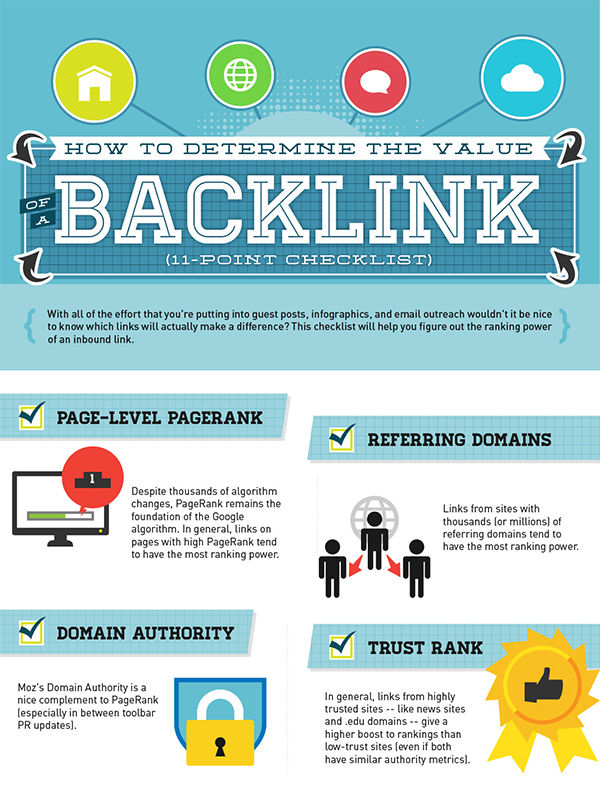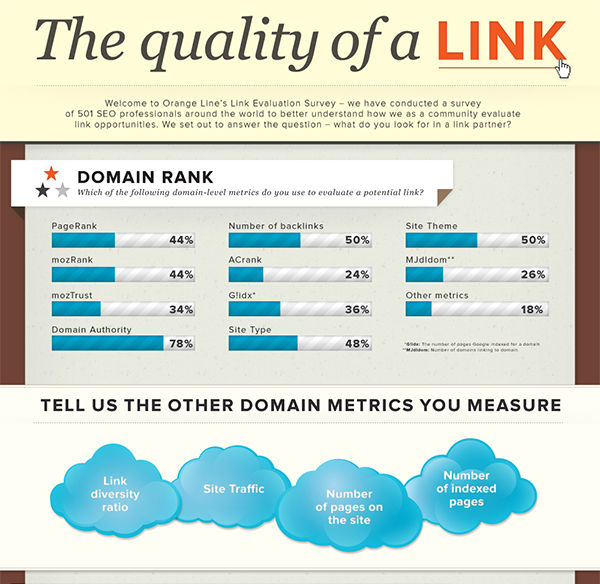SEO Basics: Backlinks – The Good, the Bad, and … [Infographic]
If you are currently working on search engine optimisation, you will notice quickly that most people in this business only talk about one thing: the so-called “Link Building”. This, put simply, means that you should try to establish a situation where as many external links as possible point to the website that is supposed to be optimised. Google uses the amount of entering links as a measure of relevance and popularity of the website. The more there are, the higher the search engine lists the website in the ranking. Relevant and popular sites with many good links occupy the first spots; other sites are placed below. Today, we are presenting two infographics that want to shed some light into the darkness link building is for some.
Ranking Power and Link Quality
Today’s infographics deal with the topic backlinks. While both of them were made in 2014 already, they still carry truth. The first one tells you how you can estimate the ranking power of a backlink and what has to be considered regarding that. The second graphic informs you on how to find out whether a particular backlink is helpful or harmful to your website. The two graphics cover the basic knowledge on this topic well.
Measuring the Ranking Power of a Backlink
Not all inbound links are equally good. The contrary is the case, as some links can damage the website more than they help it. This infographic by Pole Position Marketing shows you how to measure the efficiency of a backlink.

Are Inbound Links Helpful to your Website?
For the ranking in search engines, the amount of websites that link to your site is vital. However, not all links are equally valuable in that regard. There are even links that are more harmful than helpful for your website.
Orange Line asked 501 SEO professionals how they judge and estimate the value of a good link. The results are aggregated in the following graphic.

Conclusion
The infographics mentioned above convey some „basic knowledge” of building backlinks. This should be enough to help you estimate whether a link to your website is good and if so how useful it will be for you. With that knowledge in mind, we hope that you can build inbound links a little „safer” now and that you enjoy doing so.
Related Links:
(dpe)
- Online Marketing Basics #4: Search Engine Optimization (SEO) for…
 Three Technical SEO Basics You Should Keep in Mind
Three Technical SEO Basics You Should Keep in Mind How Does Google’s New Ranking Factor Mobile-Friendly Affect Your
How Does Google’s New Ranking Factor Mobile-Friendly Affect Your How To Improve Your Ranking: 5 Quick SEO Tips
How To Improve Your Ranking: 5 Quick SEO Tips The Tools of Online Marketing (Basics #1)
The Tools of Online Marketing (Basics #1) Muzli and Panda: Free Daily Visual Design Inspiration on the Go
Muzli and Panda: Free Daily Visual Design Inspiration on the Go